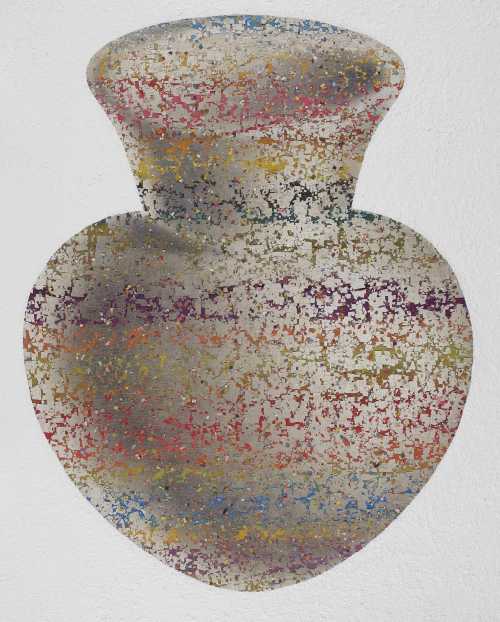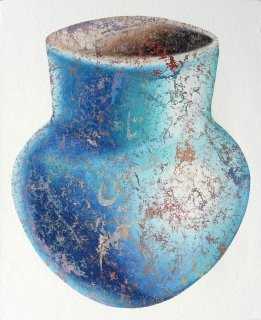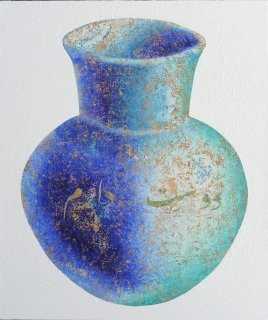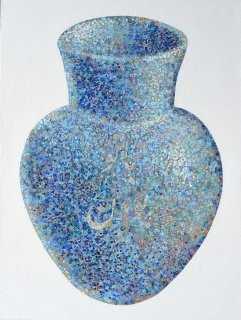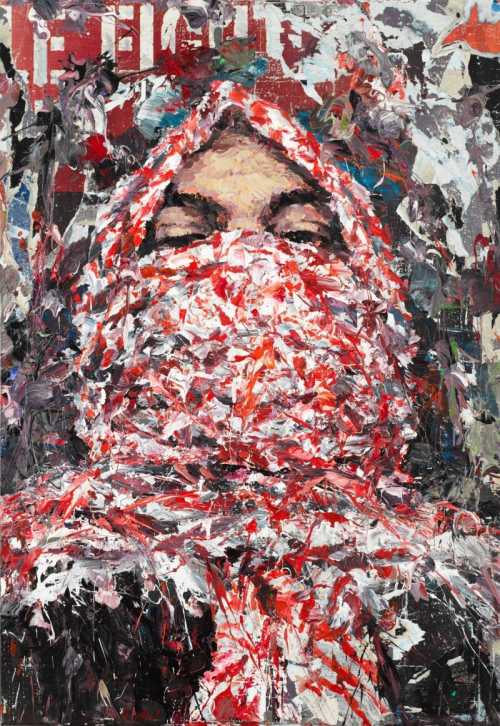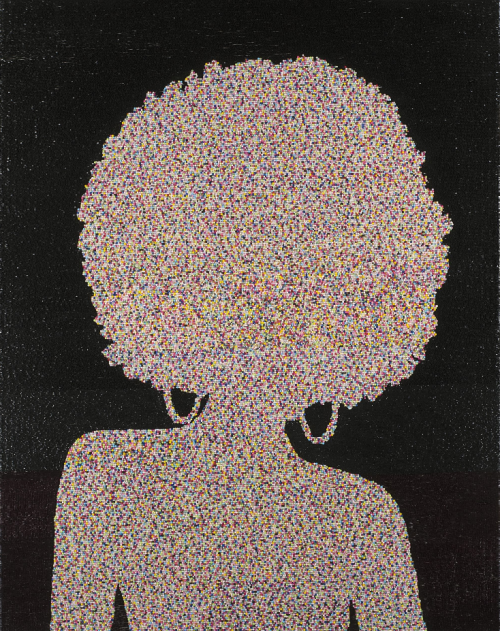- Striped Jar on White 2007
- Acrylic on canvas
- Painting
- 127.5 * 158.5 cm
- signed, titled and dated '"striped jar" on white Farhad Moshiri 2007', signed and dated in Farsi (on the reverse)
Artwork Description
'I had picked as a subject matter an object that was the first man had made and here I was, thousands of years later, doing the same thing again, despite every revolution, all the changes that had happened'. (Farhad Moshiri quoted in W. Singh-Bartlett, "Farhad Moshiri When Ancient becomes Modern", in Canvas magazine, vol. I, no. 5, September-October 2005, pp. 76-79).
Iranian-born Farhad Moshiri has experimented various mediums throughout his successful career and has constantly created innovative techniques to express his interpretation of the contemporary world. Following his stay abroad during which he graduated from CalArts in California, Farhad Moshiri returned to his homeland in the early 1990s, at the end of the Iran-Iraq war. Passionate about the moving image, Moshiri faced the issue of censorship which made him return to the traditional canvas.
Inspired by ancient Persian ceramic jars of which he is an avid collector and fascinated by the essence of the paint as a medium, he plays with the texture of his works to achieve a new form of art. The result is an outstanding series of jar paintings where tradition and modernity meet. In order to attain the highly texturized surface of his Jars, Farhad Moshiri rolls up, folds and crushes the canvas allowing the almost dried pigment to flake and crackle, before consolidating the surface with a transparent glue to avoid any further paint loss.
The initial series of Jars executed by Moshiri were oversized depictions of vases either slendernecked, heart-shaped or round, often in an ochre monochromatic palette, meant to be displayed just like ancient artefacts. Later on, the vases were set against a white neutral background and a multicoloured palette was used. The artist aimed to erase the context, focus on the shape and move away from the antique appearance of the work. The result was a vibrant contemporary work rooted in the cultural heritage yet looking far beyond the present time. As a next step, calligraphy was superimposed to the crackled surface of the vase, but unexpectedly and with a humouristic tone, it evoked Farsi Pop songs rather than classical poetry.
The present work Striped Jar on White is a stunning multi-coloured vase set on a white background. Similar to the Dadaist playful practice of the Cadavre Exquis or Exquisite Corpse where endless combinations are possible, the technique used by Moshiri for his jars relies on the randomness of the folding process. The result is an elegant jar evoking history and heritage, whilst strikingly modern and Pop.
Iranian-born Farhad Moshiri has experimented various mediums throughout his successful career and has constantly created innovative techniques to express his interpretation of the contemporary world. Following his stay abroad during which he graduated from CalArts in California, Farhad Moshiri returned to his homeland in the early 1990s, at the end of the Iran-Iraq war. Passionate about the moving image, Moshiri faced the issue of censorship which made him return to the traditional canvas.
Inspired by ancient Persian ceramic jars of which he is an avid collector and fascinated by the essence of the paint as a medium, he plays with the texture of his works to achieve a new form of art. The result is an outstanding series of jar paintings where tradition and modernity meet. In order to attain the highly texturized surface of his Jars, Farhad Moshiri rolls up, folds and crushes the canvas allowing the almost dried pigment to flake and crackle, before consolidating the surface with a transparent glue to avoid any further paint loss.
The initial series of Jars executed by Moshiri were oversized depictions of vases either slendernecked, heart-shaped or round, often in an ochre monochromatic palette, meant to be displayed just like ancient artefacts. Later on, the vases were set against a white neutral background and a multicoloured palette was used. The artist aimed to erase the context, focus on the shape and move away from the antique appearance of the work. The result was a vibrant contemporary work rooted in the cultural heritage yet looking far beyond the present time. As a next step, calligraphy was superimposed to the crackled surface of the vase, but unexpectedly and with a humouristic tone, it evoked Farsi Pop songs rather than classical poetry.
The present work Striped Jar on White is a stunning multi-coloured vase set on a white background. Similar to the Dadaist playful practice of the Cadavre Exquis or Exquisite Corpse where endless combinations are possible, the technique used by Moshiri for his jars relies on the randomness of the folding process. The result is an elegant jar evoking history and heritage, whilst strikingly modern and Pop.
Realized Price
170,648 USD
Min Estimate
100,022 USD
Max Estimate
140,954 USD
Average Artwork Worth
+49.068%
Average Growth of Artwork Worth
Sales Performance Against Estimates
Average & Median Sold Lot Value
2021 - 2025
Performance vs. Estimate
2021 - 2025
Sell-through Rate
2021 - 2025
Similar Artworks
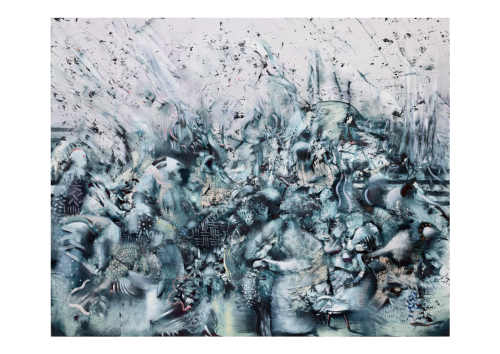
Initiation
Estimation
£120,000
136,364 USD
-
£180,000
204,545 USD
Realized Price
£252,000
286,364 USD
68%
Sale Date
Phillips Auction
-
13 October 2022
